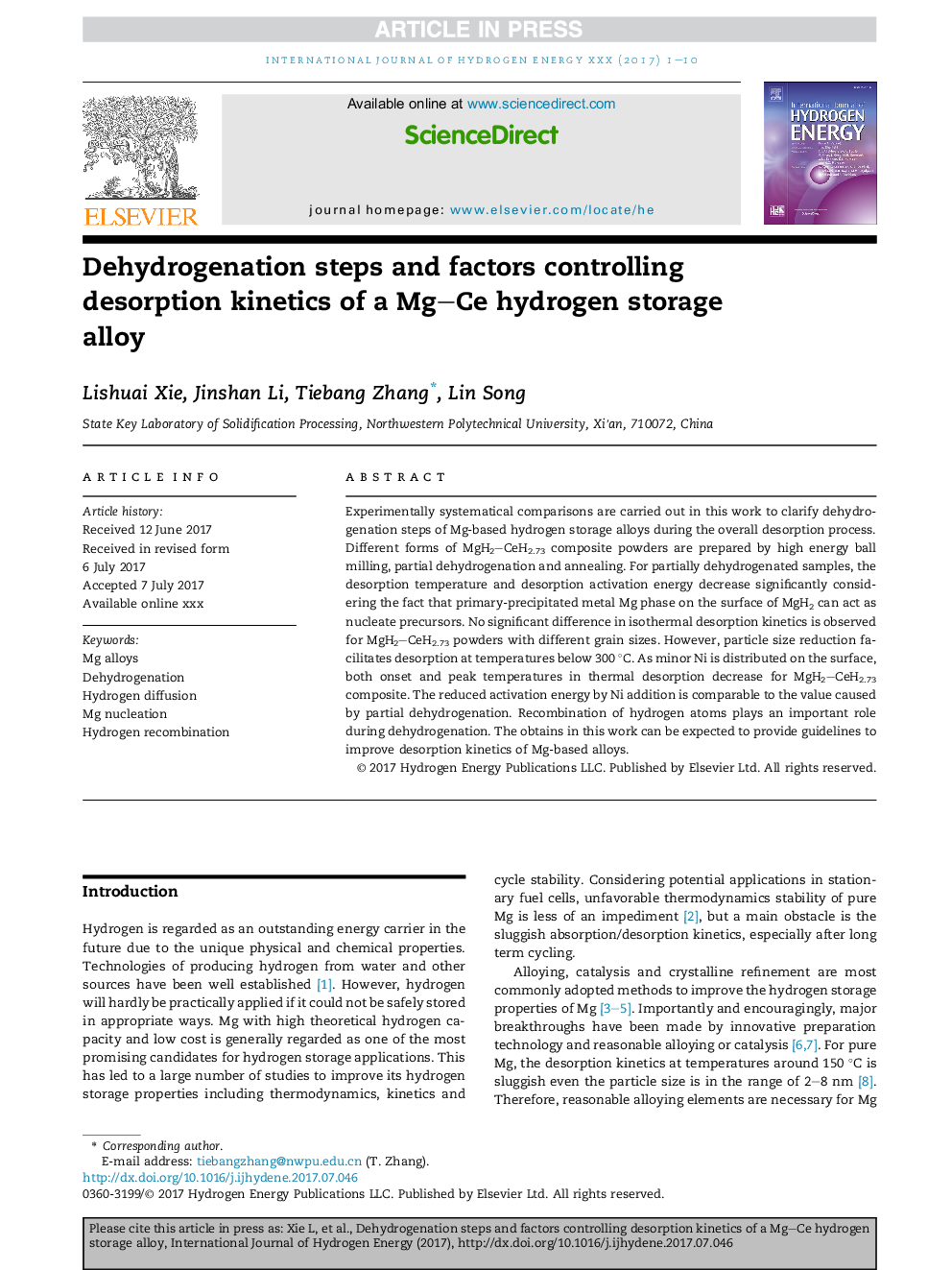| Article ID | Journal | Published Year | Pages | File Type |
|---|---|---|---|---|
| 5145971 | International Journal of Hydrogen Energy | 2017 | 10 Pages |
Abstract
Experimentally systematical comparisons are carried out in this work to clarify dehydrogenation steps of Mg-based hydrogen storage alloys during the overall desorption process. Different forms of MgH2CeH2.73 composite powders are prepared by high energy ball milling, partial dehydrogenation and annealing. For partially dehydrogenated samples, the desorption temperature and desorption activation energy decrease significantly considering the fact that primary-precipitated metal Mg phase on the surface of MgH2 can act as nucleate precursors. No significant difference in isothermal desorption kinetics is observed for MgH2CeH2.73 powders with different grain sizes. However, particle size reduction facilitates desorption at temperatures below 300 °C. As minor Ni is distributed on the surface, both onset and peak temperatures in thermal desorption decrease for MgH2CeH2.73 composite. The reduced activation energy by Ni addition is comparable to the value caused by partial dehydrogenation. Recombination of hydrogen atoms plays an important role during dehydrogenation. The obtains in this work can be expected to provide guidelines to improve desorption kinetics of Mg-based alloys.
Related Topics
Physical Sciences and Engineering
Chemistry
Electrochemistry
Authors
Lishuai Xie, Jinshan Li, Tiebang Zhang, Lin Song,
